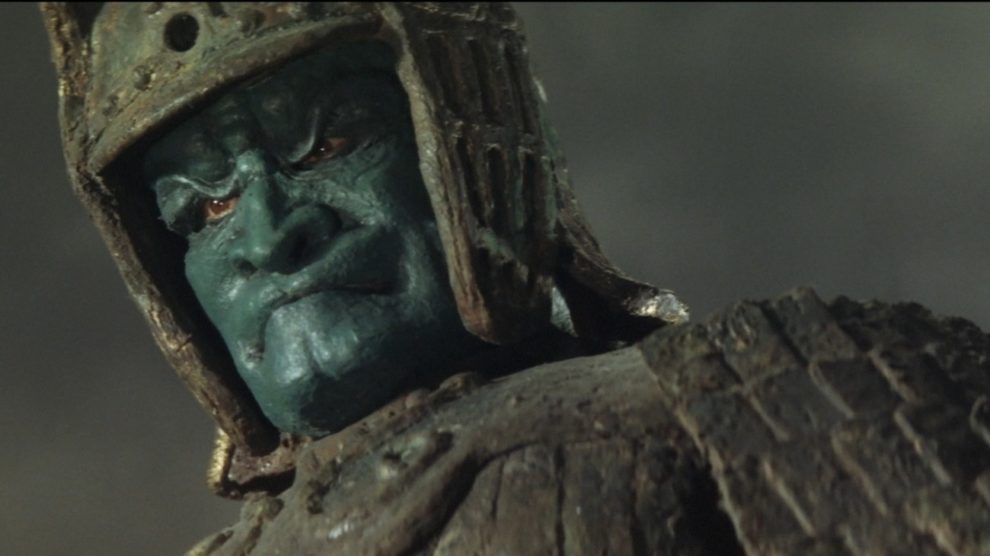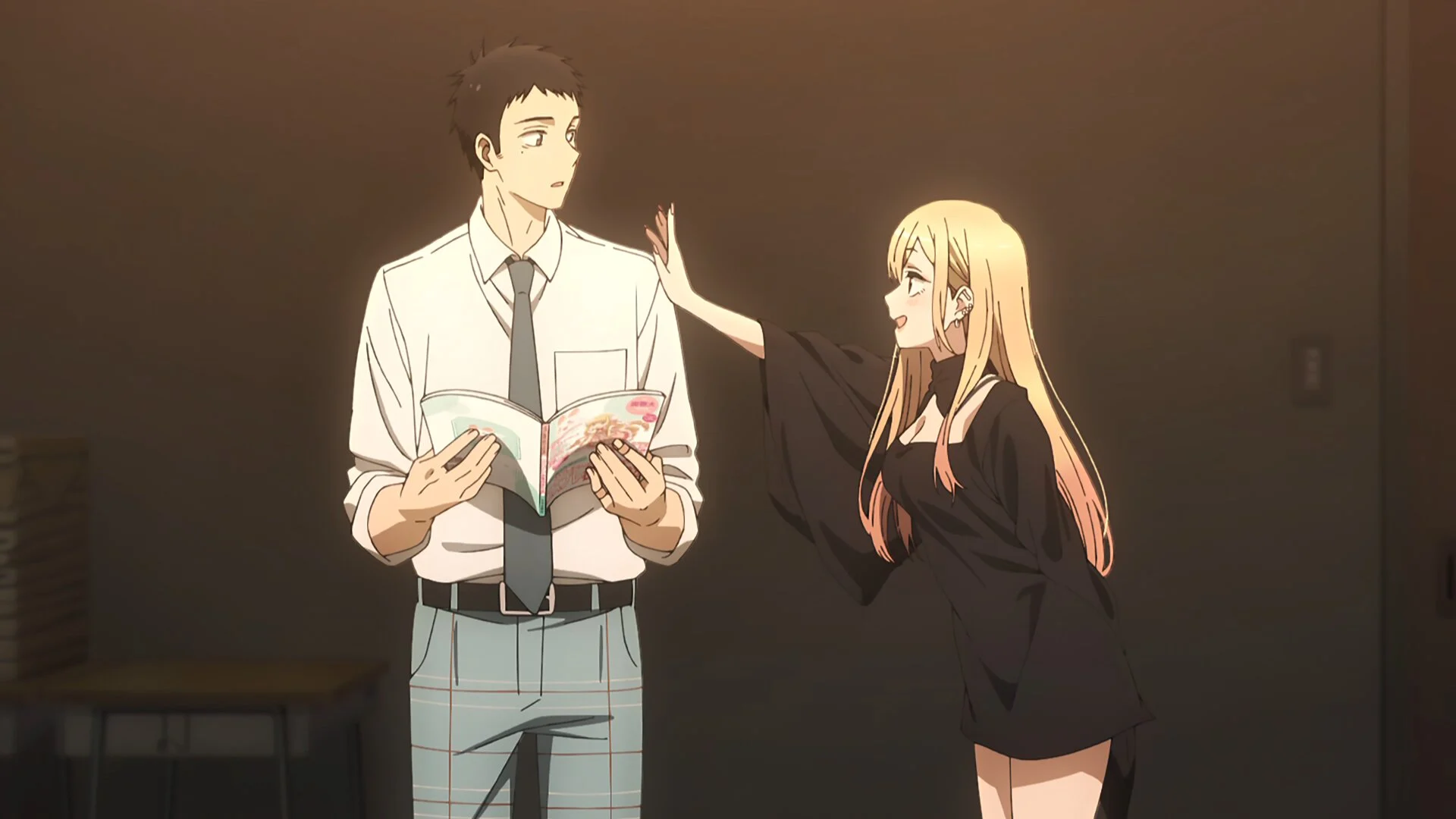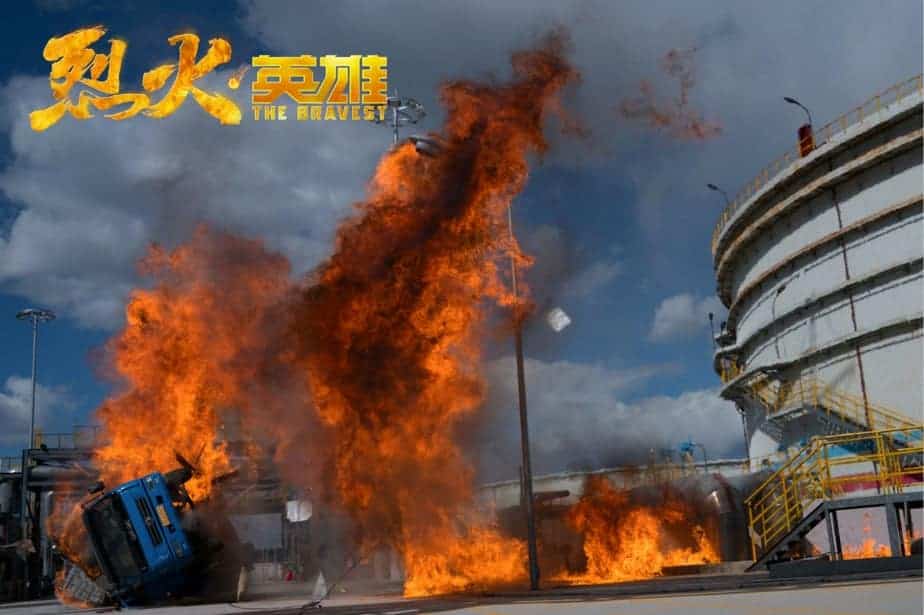By the mid-1960s, Toho Studios had fully showcased the broad, international appeal of the kaiju film with numerous Godzilla and other stand-alone genre entries like Rodan, Varan the Unbelievable, and Mothra among numerous others that were scoring global success. Spurred on by this success, rival Daiei studios attempted their own kaiju cash-cow in Gamera: The Giant Monster which would soon become its own franchise after the studio attempted this new effort headed by veteran director Kimiyoshi Yasuda. Mixing together the kaiju scale of destruction with a jidaigeki story framework and setup, the first of the Daimajin trilogy is available in a spectacular boxset from Arrow Video
A samurai lord of a once peaceful village was murdered by one of his own men. The traitor Samonosuke (Ryutaro Gomi) then claims the throne, forcing servant Kogenta (Jun Fujimaki) to take the lord's two small children Tadafumi (Yoshihiko Aoyama) and Kozasa (Miwa Takada) to flee into the woods. There, they conceal themselves near the huge stone statue of Daimajin, the god of their village. After 10 years, the new samurai lord has proven to be very brutal and merciless towards the villagers, showing off his authority to no limits. Therefore, the villagers pray for Daimajin to awaken and to use his powers and spirit to save them from the treachery thrust upon them.

“Daimajin” is one of the best entries in the genre. Among the more standout qualities is the wholly immersive storyline by writer Tetsuro Yoshida that depicts this mountain community and their relationship with the Majin. Creating a community that is aware of its existence and presence while not being completely enslaved to practices designed to placate it is a surprising touch, as the villagers are allowed a freedom of life not normally associated with these types of efforts. That includes the use of ceremonial appeasement rituals and practices that are performed only in times where it's necessary instead of a constant factor in their lives where they pray for his protection when they believe he stirs from his mountain home. The shift in years to show the treatment and brutality inflicted by Samanosuke and his men towards the villagers is also effectively realized, with their deplorable working conditions, slave labor lifestyle, and lack of resources contrasted quite well, leading to the need to seek revenge.
On top of this great story, “Daimajin” works well by offering up a spectacular mix of action. The sequences depicted here are quite fun in that they blend together elements from the tokusatsu and jidaigeki genres. It all starts incredibly well with the takeover of the castle where Samanosuke and his forces arrive and take out the guards in a prolonged, engaging sword battle throughout the castle. As Kogenta races to save the children from the encroaching army, the close calls and escapes provide some excitement and urgency in the chance to escape the castle. As well, the other battles are equally lively, with the soldiers in Samanosuke's army shown to be keeping the villagers in line under his orders, subjecting them to the harsh treatments and orders he barks out, which only furthers the audiences' disgust towards them. The battles at the compound provide even more fun as the quick and brutal confrontations showcase the superiority of Samanosuke's men against the paltry uprising attempts by the villagers.
It's when the film finally awakens the Majin, though, that it effectively becomes an all-time classic. The resurrection ceremony featuring the troops boring into the statue causing it to bleed on the soldiers below, triggering a series of natural disasters and landslides that wipe out everyone, is a fantastic display of miniature work and live-action. Seeing the creature come to life and plod off towards the castle is incredibly cathartic and joyous, knowing that it's come to save the day after everything's happened, and the destruction that follows is no less enjoyable. Seeing the creature appear and smash the wood and stone to pieces as the crumbling miniatures are interspersed with full-scale stunt-work of the actors being knocked over, falling through holes dug up by the creatures' wake or interact with the props of the creatures' feet or hands, is marvelous to behold. The tactics to try to stop it are both fun to see play out and logical in construction, if a tad too complex to be thought of at the moment, especially if no one's taking the threat seriously. Regardless, the action and spectacle win and they're a lot of fun, resulting in the film's unquestioned highlight. Some may be taken aback by how late he finally appears but the quality of his scenes overrides that easily.
Without much in the way of flaws and generally working on top-quality material in most other aspects, “Daimajin” is one of, if not among the best entries in the genre. Enthusiasts of either the tokusatsu or jidaigeki genres will find plenty to enjoy here as well as fans of giant monster movies or Japanese sci-fi films.















